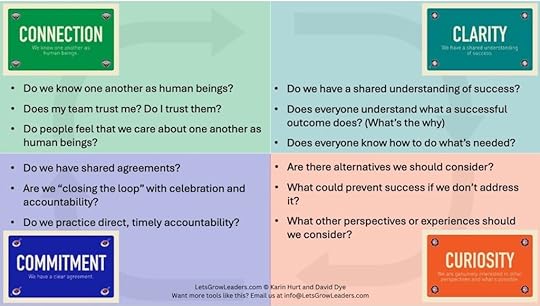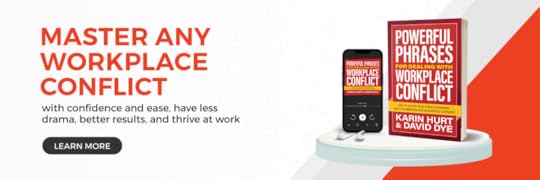David Dye's Blog, page 19
June 24, 2024
3 Reasons Your Team Building Activities are Tanking Morale
Done well, team building activities deepen connection and trust. They can get your team thinking (and talking about) what matters most. The best team building experiences make it easy to show up a bit more human. And give your team important insights into the humans they work with.
Ideally, you want your team to say, “Hey, now THAT team building activity was a great use of our time.”
And yet, we consistently hear from employees who dread attending their company’s team building events:“You’ve got to be kidding me. Not AGAIN! I have work to do. No one has time for this stuff. I’ll tell you what you can do with your marshmallow stack.”
“My boss has these mandatory dinners so we can “bond.” But the truth is they make me feel more isolated and lonely. I don’t fit in. I hardly said three words all night, and I don’t think anyone noticed or cared.”
“Tomorrow we’re going to a mandatory team building golf tournament. I’ve been warned that the execs pay close attention to how we show up on the golf course. Apparently, golf is a metaphor for leadership presence. I’m NOT a golfer. I’m stressed enough about spending the day out of the office. And on top of that, I have to worry about my standing in the 9-box succession grid?”
“I just had my performance review and my boss told me I need to be more of a team player. When I asked for examples, he shared how I didn’t sing karaoke with the team the other night at the company offsite. BTW they were singing Beastie Boys, You’ve Got to Fight for Your Right to PartAAAAY. The room was swarming with executives and I didn’t see how that could enhance my brand. When I pointed that out to my boss, he just said, “Try harder next time.”
“I have an idea on how to be a better team, let’s get some clarity on what we’re doing around here.”
Of course, what makes a great team building activity for one team, might be a nightmare for another. Karaoke, golf, or birdwatching at the local park are all great, if your team finds them fun. These team builders break down when people feel excluded or disconnected.Or, when people see your well-intentioned team building activity as an irrelevant burden to be tolerated when they have “real” work at stake.
3 Questions to Ask For Lasting Team DevelopmentBefore you invest in team building, stop and ask yourself these three questions.
1. Is this team building activity inclusive?Inclusivity comes in many forms. Start with the obvious concerns. Is everyone physically and emotionally able to participate? Does this team building activity sound fun, or can they see the benefit of participating, even if this isn’t their jam?
Is there an inner circle or clique in your team that will naturally bond no matter what you do? How can you encourage those on the periphery to participate? Can you build in ways to spark conversation and connection? For example, can you prime your team dinners with a few conversation starters and a structured way to ensure everyone gets a chance to participate?
If the plan includes a good bit of beer, how’s that going to land for your non-drinkers as the night rolls on?
If there is a lot of physical activity involved, who gets excluded?
2. Have you focused on the fundamentals?Great teams focus on the fundamentals. They have aligned expectations, communicate consistently, check for understanding, and hold one another accountable to commitments. They are comfortable giving and receiving feedback and sharing ideas. If expectations aren’t clear, no amount of pizza or bowling will fix that.
Your fundamentals are the cake, team builders are the icing.
For example, when we work with teams on accountability, we start with these foundational questions based on the Let’s Grow Leaders Accountability Loop to identify what’s working and opportunities for better collaboration.
3. Is this there transferable learning?Sure, people like to have fun. They also want their work to be less stressful and more productive. Help your team debrief with a “so what” and “now what” of the time they spend together.
Take a beat to align and commit to a few habits that will help your team be more connected and productive.
If you’re looking for easy-to-implement team building activities that make work, work better, check out our new Synergy Stack Team Collaboration System. This card deck (and easy-to-facilitate activities) will help your team align on habits to accelerate performance, reduce stress, and work better together.
We’d love to give you a demo or talk with you about our upcoming SynergyStack Trainer Certification. Just drop us a line at info@letsgrowleaders.com.
The post 3 Reasons Your Team Building Activities are Tanking Morale appeared first on Let's Grow Leaders.
June 20, 2024
Recurring Conflict Conversations: How to Unstick Stuck Situations
Do you ever get frustrated by conflict conversations that just won’t end? You think you’ve reached an agreement, and a few weeks later you’re back to the same Groundhog Day discussion.
Your conversation needs to produce action, or nothing changes. And if nothing changes, it’s worse than if you never had a conversation. Now you’ve wasted time, trust drips away, and people lose hope. Commitment is the answer and the key to move you from words to action.
There are two keys to a useful commitment in conflict conversations. The first is to get specific. You want specific actions with specific owners who have specific finish lines. The second key to an effective commitment is to schedule a time to review your agreement.
Bring on the Commitment G.O.A.T.sLet’s give you some commitment G.O.A.T.s (greatest of all time Powerful Phrases) that will help ensure your conflict conversations lead to action.

You might not have resolved all the issues, but steering the conversation to one specific next step helps create forward momentum. Asking for just one action will usually feel doable. And if one step feels easy, you can always say “Great, what else do you think we could do?”
2. So, to recap our conversation, we’ve agreed to _________. Is that your understanding?As you can see, we’re big believers in the “check for understanding” throughout the conversation. It’s particularly important when recapping a workplace conflict conversation. The more emotionally intense the conversation, the more critical this final step is. If you leave the discussion with different expectations, you’ll have continued conflict and hurt feelings.
3. Let’s schedule some time to talk about this again, and see how our solution is working.If you’ve ever been in one of our leadership training programs, you’ll recognize this as “scheduling the finish,”
One of the big sources of workplace conflict is when you think you’ve resolved it, and everything doesn’t go the way you planned. Scheduling time to talk about the situation again makes the follow-up conversation more natural because you’ve already agreed to it.
A scheduled follow-up increases the odds that you’ll both keep your commitments to one another. And, it gives you a built-in opportunity to discuss the inevitable disruptions to your plan.
Your turn.How about you? What’s one of your favorite powerful phrases to prevent conflict conversations from recurring?
The post Recurring Conflict Conversations: How to Unstick Stuck Situations appeared first on Let's Grow Leaders.
June 14, 2024
How to Get Your Team to Stop Sending You Frustrating Email Communication
Have you ever been SO FRUSTRATED by your team’s email communication that you just want to hit “delete all”? Too many words. Gobs of attachments. Data with no explanation.
If you’re frustrated with the emails you’re getting from your team (particularly if they’re seasoned senior leaders), it’s easy to think, “They should know better.”
But even if they SHOULD know, if you’re not getting what you need, ask for it.
In today’s Asking for a Friend I share 4 questions to help you communicate clear expectations, reduce frustration, and save time.
How Do I Get My Team to Send Me Better Email? (Asking for a Friend)

One way to ensure your team sends you better email communication is to give them screening questions to use BEFORE they hit send.
1- Have I articulated a clear purpose in the headline and opening sentence?First, be sure you have a clear headline and opening sentence. This well-defined purpose immediately communicates the email’s intent, reduces confusion, and saves time. For more guidelines on how to write a good headline see: Email Best Practices: How to Send a Better, More Effective Email.
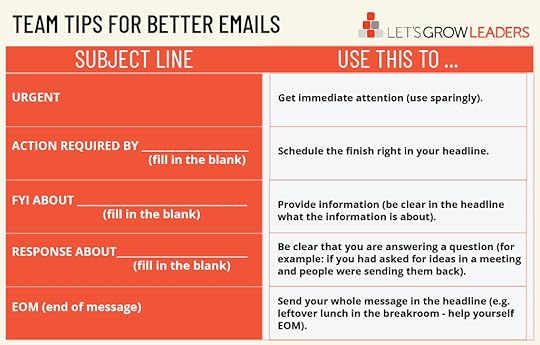
Second, have you provided a clear and concise recommendation and rationale (in bulleted points)? Bullet points make the email easier to read and force you to streamline your message. One of the biggest frustrations we hear from executives is that the emails are just too long. Nobody has time for that.
3- Have I provided a meaningful interpretation of any data I’ve included or attached?Third, if you’ve included data, be sure you’ve included a meaningful interpretation. And please DON’T attach a bunch of spreadsheets without explanation. When attaching data, always include the “so what.”
4- Clear Next StepsEnd by scheduling the finish with a clear call to action. What do you want the person to do next? Make a decision? Weigh in? Attend a meeting? Congratulate your team?
If you’re a senior leader frustrated by too many bad emails, start by setting clear expectations with your team. If you’re the one sending the email, be everyone’s favorite communicator by asking these four questions BEFORE you hit send.
The post How to Get Your Team to Stop Sending You Frustrating Email Communication appeared first on Let's Grow Leaders.
The Key to Resolving Conflict: Knowing When to Quit
Episode 261: In this episode, you’ll explore resolving conflict – when it might be necessary to quit a conflict or even leave a job. You’ll learn specific phrases and questions to ask yourself to determine if it’s time to walk away. Host David Dye and guest, Karin Hurt, shares personal stories and examples, illustrating the importance of speaking up and considering the impact of the conflict on your life. The episode wraps up with a heartfelt thanks for your support and promotion of Powerful Phrases for Dealing with Workplace Conflict.
Resolving Conflict: Recognizing When to Walk Away0:00 – 2:00 Discover the heartbreaking realization from the Workplace Conflict and Collaboration survey: many people wish they had quit their jobs sooner due to unresolved conflicts. Learn how to recognize when it’s time to walk away.
2:00 – 4:00 David introduces the episode and welcomes guest Karin Hurt. Karin emphasizes the importance of knowing when to leave a conflict or a job.
4:00 – 6:00 Karin shares a significant experience from the Association of Talent Development (ATD) Global Conference, highlighting the widespread interest in resolving workplace conflicts.
6:00 – 8:00 David discusses the successful launch of their book, “Powerful Phrases for Dealing with Workplace Conflict,” and its positive reception across various platforms.
8:00 – 10:00 Karin reflects on the overwhelming response at their booth during the conference. The response illustrates the practical need for conflict resolution strategies.
10:00 – 12:00 David and Karin, thank you for your support. They encourage you to pick up their book on managing workplace conflicts better.
Practical Strategies for Conflict Resolution12:00 – 14:00 The conversation shifts to the episode’s main focus: understanding when to quit a conflict or job and offering key questions to ask yourself (see below).
14:00 – 16:00 Karin and David outline critical questions to consider(see below), such as the impact of the conflict on other areas of your life and overall well-being.
16:00 – 18:00 David emphasizes evaluating whether the conflict is pervasive within the organization or isolated to certain individuals.
18:00 – 20:00 Karin shares a personal story from her corporate days, demonstrating how a significant conflict led her to start the Let’s Grow Leaders blog, eventually transforming her career and personal life.
Key Questions to Ask YourselfHere are some of the questions for determining when to walk away from a conflict or a job:
Have I tried?Have you tried addressing the conflict using the available tools and phrases?What do I gain or lose by quitting?Consider the pros and cons of staying versus leaving, including the impact on your career, well-being, and future opportunities.Is this conflict affecting other areas of my life?Assess whether the conflict negatively impacts your health, relationships, or happiness.How do I feel about how I am showing up?Reflect on whether the conflict is causing you to behave in ways inconsistent with your values and self-image.Is conflict a pervasive organizational problem or limited to one or two people?Determine if the conflict is a symptom of larger systemic issues within the organization or is isolated to specific individuals.Is there a pattern?Consider if the conflict is a recurring issue or an isolated incident.Is there another way to accomplish my goal here?Explore alternative approaches or solutions to help you achieve your goals without quitting.The post The Key to Resolving Conflict: Knowing When to Quit appeared first on Let's Grow Leaders.
June 10, 2024
Bigger, Better Small Talk: Practical Ways to Connect with Your Coworkers
Do you dread small talk? Does the idea of asking (or being asked) “How was your weekend?” make you cringe?
We get it. You don’t have a lot of extra time for long conversations. You’ve got work to do.
But here’s the thing. People are more likely to help you when they feel seen by you—as a person—not just for what they can do for you.
Lots of research shows that connection is vital for trust. And trust leads to better collaboration and results. In other words, connection makes work, work better.
So how can you connect more deeply with your coworkers, especially if small talk doesn’t come easily for you?
It doesn’t have to take long to have a connected conversation.
The Power of the Next Best QuestionA simple way to connect with a co-worker is by asking open-ended questions like, “How was your weekend?”
But, asking a small talk question without a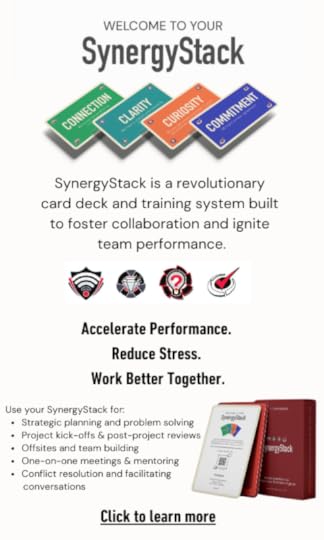 follow-up can feel insincere.
follow-up can feel insincere.
Imagine your co-worker Jack asking a typical small talk question, “How was your weekend?”
And you say “Great. I got a new puppy.”
To which Jack replies “Fantastic. Now let’s talk about our project.”
Yuck. Now that conversation likely feels like a waste of time.
To build a deeper connection, Jack could ask a few next best questions to keep the conversation going and show genuine interest.
Jack: “How was your weekend?”
You: “Great. I got a new puppy.”
Jack: “Oh, wow! What kind of puppy is it?”
You: “It’s a Labrador.”
Jack: “Fun! Is this your first one?”
You: “Yes, it is.”
Jack: “Is your puppy pulling your dirty socks out of the laundry yet? Because mine is a professional sock chomper.”
That’s less than a 20-second conversation, even if you let it breathe with some additional banter, you can still connect in just a few minutes.
Use Better Small Talk to Be Interested and InterestingIt doesn’t take long to make a quick human connection. It’s important to share a bit about yourself as well. Your coworkers want to know they’re working with a real person. While you don’t need to overshare, sharing personal moments, like a picture from your latest trip, can help strengthen bonds.
The key is to show up Interested AND Interesting
Think about how you can be both interested in your coworkers and an interesting person they enjoy being around.
Consider the following about your colleagues and what you might be interested in sharing about yourself:
• Who are the important people (and pets) in their lives? (how about in yours?)
• What do they do for fun outside of work? (do you have anything fun you like to talk about or any interests in common?)
• Do they have any big projects they’re working on outside of their day job? (what are you up to that might be of interest to them)?
Initial Question: “How’s your family doing?”
Response: “They’re doing well. My sister just got married.”
Some Next Best Questions:
“That’s fantastic! Did you have a big wedding celebration?”
“Any funny moments from the wedding you can share?”
“Did you get a chance to give a toast? I bet it was legendary.”
Initial Question: “What did you do for fun this weekend?”
Response: “I went hiking.”
Possible Next Best Questions:
“Nice! Where did you go?”
“Did you run into any critters, or was it just you versus the elements? I love it when I see a moose.”
Initial Question: “Any exciting projects you’re working on outside of work?”
Response: “I’m renovating my kitchen.”
Some Good Next Best Questions:
“That’s awesome! Are you going for a specific style or theme?”
Have you had any DIY disasters yet, or is it all going smoothly?”
“Does this mean we can expect a cooking show starring you soon?”
Initial Question: “Been anywhere interesting lately?”
Response: “I just got back from Italy.”
Next Questions:
“Italy! That sounds amazing. What was the highlight of your trip?”
“Did you try any incredible food that you’re still dreaming about?”
“Any funny stories from your travels? Like getting lost and discovering a hidden gem?””
Initial Question: “Any big wins recently?”
Response: “I completed a marathon.”
Some Easy Follow-Up Questions:
“Wow, that’s impressive! How long did you train for it?”
“Did you have a celebratory meal afterward, or just a well-deserved nap?”
“Did you beat your personal best, or was surviving the goal?”
It doesn’t take more than a few minutes to check in and invest in a human connection before jumping into work. By asking better questions and sharing a bit about yourself, you can create more connection and trust to make work, work better.
Your turn. What are your favorite ways to make more meaningful small talk for better human connection?
The post Bigger, Better Small Talk: Practical Ways to Connect with Your Coworkers appeared first on Let's Grow Leaders.
June 7, 2024
Helpful Strategies for Dealing with a Passive Aggressive Coworker
Episode 260: In this episode, you’ll discover effective ways to handle a passive aggressive coworker. Dealing with this type of conflict can be incredibly frustrating, but don’t worry—you’ve got some powerful phrases to use. Throughout the podcast, you’ll hear examples of passive aggressive behavior and learn phrases to address it effectively. You’ll learn to describe what happened calmly, ask for clarification, and focus on specific goals or facts. It’s crucial to stay calm and not react emotionally to the behavior.
You’ll get advice on what not to do—like directly telling someone they’re being passive-aggressive. Instead, you’ll hear phrases to help you constructively address the behavior.
Also, learn about the book, “Powerful Phrases for Dealing With Workplace Conflict.” If you find this podcast helpful, consider leaving a review or buying the book. There’s a special offer for organizations, too—if you purchase 50 or more copies, you can get a virtual live online program tailored for your team.
Handling Passive Aggressive Coworkers00:00 – Introduction to the Episode
The Leadership Without Losing Your Soul podcast provides practical leadership tools and strategies to achieve transformational results. Today’s episode, is all about dealing with passive aggressive coworkers. You will learn a dozen or more ways to handle this frustrating aspect of workplace conflict.
02:00 – Celebrating the Book Launch
Before diving in, thanks to everyone who has supported “Powerful Phrases for Dealing with Workplace Conflict.” It’s been a bestseller in multiple categories! If you haven’t yet, please leave a review on Amazon—it helps others find the book. And don’t forget, if your organization buys 50 or more copies, you receive a complimentary virtual live online program.
04:30 – Understanding Passive Aggressive Coworker Behavior
So, what exactly is passive aggressive behavior? It’s when someone feels anger or hostility but doesn’t express it directly. Instead, they use underhanded tactics like snarky comments, withholding information, or backhanded compliments. It’s essential to recognize these behaviors and address them effectively.
06:45 – Examples of Passive Aggressive Behavior
Let’s talk about some common passive aggressive coworker behaviors. They might make snarky remarks like, “Oh, it must be nice to be the favorite,” or avoid responsibility by saying, “I forgot.” Recognizing these patterns is the first step to addressing them.
09:00 – Don’t Call It Out Directly
One key tip: never tell someone they’re being passive aggressive. It only makes them defensive. Instead, give yourself space, stay calm, and use specific phrases to address the behavior.
Powerful Phrases and Practical Strategies11:00 – Powerful Phrases to Use
Here are some powerful phrases you can use:
“I noticed…” Calmly describe what happened. For example, “I noticed you CC’d my manager on all your emails to me. Can we talk about that?”“What I hear you saying is…” This helps start a meaningful conversation. For instance, “What I hear you saying is that you feel like I’m getting more opportunities than I deserve. Is that right?”13:30 – Focusing on the Work
Sometimes, the best way to deal with a passive aggressive coworker is to focus on specific goals or facts. Use phrases like:
“Here’s what we’re accountable for…” This helps document commitments and removes opportunities for excuses.“This is what happened…” Calmly present the facts and invite others to review them.15:45 – Asking for Help
If the behavior continues, it might be time to ask for help from a manager or HR. Use a phrase like:
“I really want to make this work, and I need your help.” Approach the situation with humility and document specific instances of the behavior.17:30 – Building Better Relationships
Remember, it’s not your job to change the other person, but these phrases can help improve your relationship with a passive aggressive coworker. Sometimes, you might even turn them into an ally.
19:00 – Additional Resources
If you like what you hear, grab a copy of “Powerful Phrases for Dealing with Workplace Conflict.” Visit conflictphrases.com or letsgrowleaders.com for more resources, including a free conversation guide to help you discuss the book with your team.
21:00 – Conclusion
Thank you for tuning in and for your continued support. Remember, you can always reach out with specific conflicts or questions. Keep being the leader you’d want your boss to be.
The post Helpful Strategies for Dealing with a Passive Aggressive Coworker appeared first on Let's Grow Leaders.
June 6, 2024
Team Conflict: Powerful Questions to Help Your Team Get Along
What do you do when YOUR TEAM is in conflict? They’re coming to you, wound up, riled up, wanting YOU to solve THEIR team conflict for them…
You might even think, “If I wanted this kind of drama, I would have taught kindergarten.”
So what DO you do?

First, if you’re just now tuning into our Powerful Phrases for Dealing With Workplace Conflict series, let me explain the G.O.A.T. in this video.
The G.O.A.T.s are the Greatest of All Time Powerful Phrases from our new book, Powerful Phrases for Dealing With Workplace Conflict (we have 12 of them, not to mention the 300 phrases for your next ACE– Acute Conflict Emergency).
Now back to you, and your team conflict.
Start by gathering information.
“What do you want me to know?” (connection)
 We learned this from trial attorney, Heather Hansen (one of our expert insight contributors). It’s a fantastic question to help draw out what is most meaningful to the person who brought you the issue.
We learned this from trial attorney, Heather Hansen (one of our expert insight contributors). It’s a fantastic question to help draw out what is most meaningful to the person who brought you the issue.
“How might I help here?” (connection)
The power of this question is that it quickly reveals whether the other person just wants to vent or has a real problem. It also helps you understand how they perceive the problem.
“Should the three or more of us talk together?” (connection)
This question is helpful in those situations where you suspect their focus is something other than solving the problem (Like undermining a colleague or kissing you to you). For people who complain and want to dump their problems on you, it helps maintain mutual responsibility.
After you ask these three questions, you will probably have enough information to diagnose the situation.
Here are the most common types of team conflict.
The person just needs to vent and get frustration off their chestThere’s a misunderstandingOne party is unresponsive or sees priorities differentlyPeople are working toward different goalsThere’s a style or personality conflictYou discover toxic behavior“What I’m hearing is… What have I missed? And, what would you add?” (clarity)
This is another check for understanding to summarize what you’ve heard and ensure you heard everyone’s voice. Now it’s time to respond.
Powerful Phrases to Support Your Team in Conflict“That sounds ______(insert emotion). Is there something I can do to help?”(Curiosity)
If the person needs to vent, use a second reflect-to-connect and check to see if there’s something else they need that will help them feel heard and get them back to their work.
“We are approaching this with different values and styles. Let’s see what we can learn from one another and build a way forward.” (Commitment)
Many team conflicts come from different perspectives, values, personalities, and styles. When your team has different values or methods that cause conflicts, it’s a valuable opportunity to learn how to communicate and leverage one another’s perspectives.
You can facilitate this conversation yourself or bring a third party to help your team learn how to navigate these differences and build remarkable results (Here are many instruments to use depending on your needs– examples include MBTI, DiSC, Enneagram, and TKI Conflict Mode Assessment. (Note: you can watch our interview with Ralph Kilman founder of the TKI here).
For this scenario, the most important focus is to have a discussion.
Team conflict can be productive– and certainly shouldn’t consume you with other people’s drama. You will energize your team and maintain productivity when you acknowledge their emotions, ask key questions, create an appropriate path forward, and (always!) use GOAT #12 to schedule the finish and ensure everyone follows through.
See Also: Why Agree to Disagree Stinks (and What to Say Instead)
The post Team Conflict: Powerful Questions to Help Your Team Get Along appeared first on Let's Grow Leaders.
June 3, 2024
Mentoring Activities: Powerful Ways to Make Mentoring More Meaningful
“Will you be my mentor?”
“Sure.”
“Um. Hmmm. Now what do we do?”
“What should we talk about?”
“Where do we start?”
It’s great when mentoring relationships evolve organically. The chemistry is just perfect and the conversation flows.
We’ve been on both sides of great mentoring relationships. Sometimes the conversation is all you need. And sometimes, it can be helpful to have some specific activities to structure your interaction.
If you are a mentor (or mentee) looking for ideas to jump-start or re-ignite your work together, here are a few proven mentoring activities to get you started.
7 Proven Mentoring ActivitiesYou could start by sharing this list with your mentor (or mentee) and decide together which mentoring activities would have the biggest impact. That’s a little meta: A mentoring activity about mentoring activities 😉
1. Create a mentoring charterIf you’ve been following us for a while, you know how much we believe in clarity as foundational to teamwork. This clarity applies to mentoring too.
Many mentoring experts advocate for a formal written charter. If that feels like a lot for you, don’t sweat. What’s important is to talk about expectations, and not to assume you’re on the same page.
For example:
What does success look like?One way to do this is to ask, “Imagine it’s six months from now. What’s different because of our work together?How will we measure our progress?Define your rolesStart with logistics– who will set up the meetings, and take notes?Is there a reverse mentoring component to your relationship? How will you both benefit from your work together?Establish norms or commitments to one another “We will show up on time,” or “We promise to keep our conversations confidential.”How frequently will you meet? For how long? How long do you anticipate the formal relationship to go?2. Career Discussions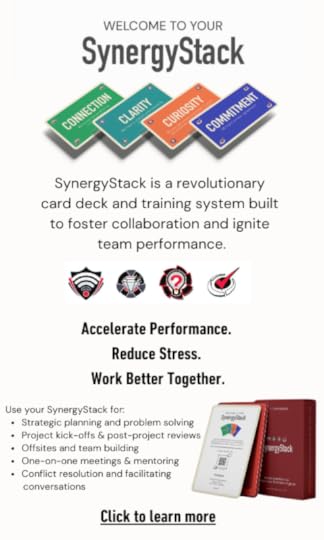 It probably won’t take long before the “What do you want to do next? conversation comes up in your mentoring conversations. And, and when it does, we’ve got you. Our Developmental Discussion Planner frames the conversation for you.
It probably won’t take long before the “What do you want to do next? conversation comes up in your mentoring conversations. And, and when it does, we’ve got you. Our Developmental Discussion Planner frames the conversation for you.
If you’re the mentor, ask your mentee to fill this out, before you have the conversation. If you’re the mentee looking for career advice from your mentor, take the initiative to prepare.
The Discussion Planner provides prompts to consider your current role, and desired future roles. It’s a great way to jump start and focus your conversation.
Our new SynergyStack System also offers activities that help you identify your strengths and opportunities, as well as habits to build on as you grow your career.
3. Speed Skills ExchangeIdentify one competency or skill you admire in the other person and hold a mini-tutoring session.
I (Karin) have a reciprocal “mentoring” relationship with a thought leader and author about twenty-five years my senior. We love our jam sessions where I offer tips and tricks on social media marketing and AI. She helps me consider broader distribution strategies and makes introductions to other gurus in our field.
4. Book ClubEvery time we write a book, we carefully consider mentoring activities and discussions to go with it.
If you’re looking for ways to de-stress your workday and build better collaboration, you might read our new book, Powerful Phrases for Dealing with Workplace Conflict. We’ve made this easy to read together with FREE activities in our Workplace Conflict and Collaboration Center.
If you’re interested in building great cultures where people speak up and share their ideas, this article gives you many options to make the most of reading Courageous Cultures together.
5. Networking PracticeHelp your mentee develop their networking skills by attending industry events together, whether in-person or virtual. Before the event, practice elevator pitches and discuss strategies for starting conversations. Afterward, debrief on the experience, discussing what went well and what could be improved.
6. DIY 360, Or Listening TourA popular applied learning assignment in our leadership development programs is a Do It Yourself 360. This works great as a mentoring activity as well. The gist is to have specific, structured conversations to gather feedback and then align on one change to work on.
More on exactly how to do a DIY 360 here.
7. Project CollaborationThere’s no better way to get to know someone’s strengths and opportunities than to work on real work together. Collaborating on a project helps your mentee develop practical skills, and you have natural opportunities to observe and coach. Bonus. You get help doing important work that matters.
P.S. The header image of this article captures the joy of a mentor and mentee celebrating a major project collaboration. Sebastian, our son, and his wonderful high-school mentor.
The best mentoring activities help you connect and grow. Each relationship is different. Pick one or two that excite you and go from there.
A few of our great mentor storiesBrainwaves Anthology (One of Karin’s mentors Dr. Henry Sims)
Brainwaves Anthology (One of David’s mentors Eva Horan)

The post Mentoring Activities: Powerful Ways to Make Mentoring More Meaningful appeared first on Let's Grow Leaders.
May 31, 2024
Effective Strategies for Communicating with Chronic Complainers
Episode 259: In this episode, David Dye breaks down strategies for dealing with those chronic complainers at work. You know the types: “Mr. Whiny,” who loves to complain for the sake of it, and the “Caring Complainer,” who genuinely cares but shows it through constant griping and cynicism.
For Mr. Whiny, it’s all about addressing the behavior and not getting sucked into unproductive conversations. But with the Caring Complainer, you can use powerful phrases to shift your energy towards positive outcomes and solutions.
David shares a personal story about how he successfully handled a chronic complainer. He also reminds us to use the strategies from his book, “Powerful Phrases for Dealing with Workplace Conflict,” and gives us a sneak peek of what’s coming up in future episodes.
What to Say to Chronic Complainers0:00 – Introduction to Chronic Complainers
David starts by sharing a story about Phil, a chronic complainer who caused a previous facilitator to quit mid-session. David introduces the episode, which focuses on giving you tools to handle chronic complainers at work.
4:15 – Types of Chronic Complainers
David explains the two main types of chronic complainers: “Mr. Whiny,” who complains for the sake of it, and “Caring Complainer,” who genuinely cares but comes off as cynical.
6:30 – Addressing Mr. Whiny
Learn how to handle Mr. Whiny by addressing the behavior directly and disengaging from unproductive discussions. Use a neutral, curious tone to ask, “What’s going on?”
10:20 – Using Powerful Phrases
David highlights powerful phrases from his book, such as, “That does sound frustrating. Do you want to make it better?” These phrases can help move Mr. Whiny towards action or signal when to end the conversation.
14:05 – Understanding the Caring Complainer
Shift your approach to the Caring Complainer by recognizing their protective nature. Use phrases that acknowledge their concerns and help them feel heard.
18:00 – Powerful Phrases for Caring Complainers
David shares more powerful phrases like, “It sounds like you’re concerned about…” and “And what else?” to help redirect the Caring Complainer’s energy towards positive outcomes.
More Strategies for Dealing with Chronic Complainers21:45 – Encouraging Solutions
Invite the Caring Complainer to envision solutions with phrases like, “What would it look like if we could solve for that?” and “How do you think we can address this?”
24:50 – Wrapping Up Conversations
David gives tips on how to wrap up conversations with chronic complainers, using phrases like, “I’m glad we had this conversation. I need to get back to work.”
28:10 – Phil’s Story Revisited
David circles back to the story of Phil, explaining how genuine listening and truthful answers turned Phil from a chronic complainer into an advocate for the program.
32:00 – Conclusion and Book Promotion
David concludes with a reminder to use the strategies from his book, “Powerful Phrases for Dealing with Workplace Conflict,” and teases upcoming episodes that will delve into more practical leadership strategies.
The post Effective Strategies for Communicating with Chronic Complainers appeared first on Let's Grow Leaders.
Overwhelmed at Work? How to Express Your Stress and Get the Help You Need
(without sounding like a complainer)
Have you ever looked at your to-do list and just laughed? You think, “Right, that’s not happening.” But moments later, you realize that none of the tasks on your list are optional. Perhaps that’s the point that your nervous laughter turns to tears. You want to be productive and a team player, but you’re completely overwhelmed at work.
What Do I Do When I’m Overwhelmed at Work? (Asking for a Friend)

Clear communication and unbridled curiosity are the name of the game when you’re feeling overwhelmed. You want clarity about what’s most important and why. And curiosity about how to approach your work differently.
You’ll also find the Powerful Phrases in this article on “saying no” helpful when you’re overwhelmed at work.
“What’s most important?”Focus is the antidote to overwhelm. Be sure you know the MITs (most important things) you need to accomplish at a strategic and tactical level.
“If I had to drop a ball here, which ball should that be?”Trust us. If you’re going to drop ball your boss cares which one. If you can’t get to everything (or can’t do everything well), this clarifying question can make all the difference.
“What does success look like?”One way to get curious about alternative, time-saving approaches is to be sure you have a shared understanding of success. With success clearly defined, you can feel more empowered to share ideas for new ways of doing things.
“I could use some help with this.”Sounds obvious. Yet most of us don’t use this phrase nearly enough.
“I have an idea.”Constraints are the gateway to creativity. If you’re feeling overwhelmed, look for new ways of working, share your idea, and ask for support to make it happen.
“Here’s what I need.”When your boss asks what they can do to help, have an answer.
Powerful Phrases for Supporting Your Overwhelmed TeamFirst, if you’re a manager, here are a few frequently uttered unhelpful phrases.
Please DON’T say these things:
“We just have to do more with less.”
“The boss says . . .”
“We’re just lucky we have jobs.”
Those phrases don’t empower people or lead to productive solutions. And the worst thing you can hear when you’re overwhelmed is the equivalent of “Suck it up, buttercup.” As a manager, you want to do what you can to prevent the snowball of overwhelm from picking up speed as it rolls downhill. Your team needs options before the overwhelm leads to burnout.
If you’re a manager, the previous phrases will work well to get the support you need from your boss. Here are a few bonus phrases you can use with your team.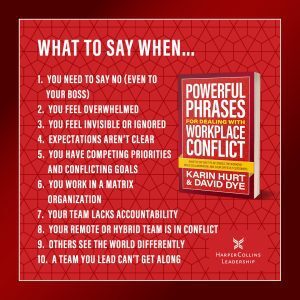
We can’t tell you how many times employees have come to us feeling overwhelmed, and when we encourage them to talk to their boss, the hours the employee works or the level of effort they give to a project shock their boss.
“It’s not okay that you’re working all weekend.”Or, “It’s not okay that you missed your child’s dance recital.” Sometimes, high-performing employees need their manager to tell them when to stop working. “Oh, you don’t need eighteen pivot tables, just some back-of-napkin math will do.”
“Let’s figure out a different way to do this.”It’s easy for your team to get stuck in old ways of doing things, particularly if they think that’s what you want. In our research for Courageous Cultures, 67 percent of respondents said their manager operates around the notion of “this is the way we’ve always done it.”
Teach your team to be curious and to look for alternative solutions.
“I really appreciate you and all you are doing.”When your team is under stress, particularly if some knucklehead told them to “do more with less,” you can’t say “thank you” and “I see you” too much. When you’re feeling overwhelmed, start with better clarity of what matters most and why, and get curious about alternative ways of working.
Your turn. What’s your favorite powerful phrase when you’re overwhelmed at work?
The post Overwhelmed at Work? How to Express Your Stress and Get the Help You Need appeared first on Let's Grow Leaders.

